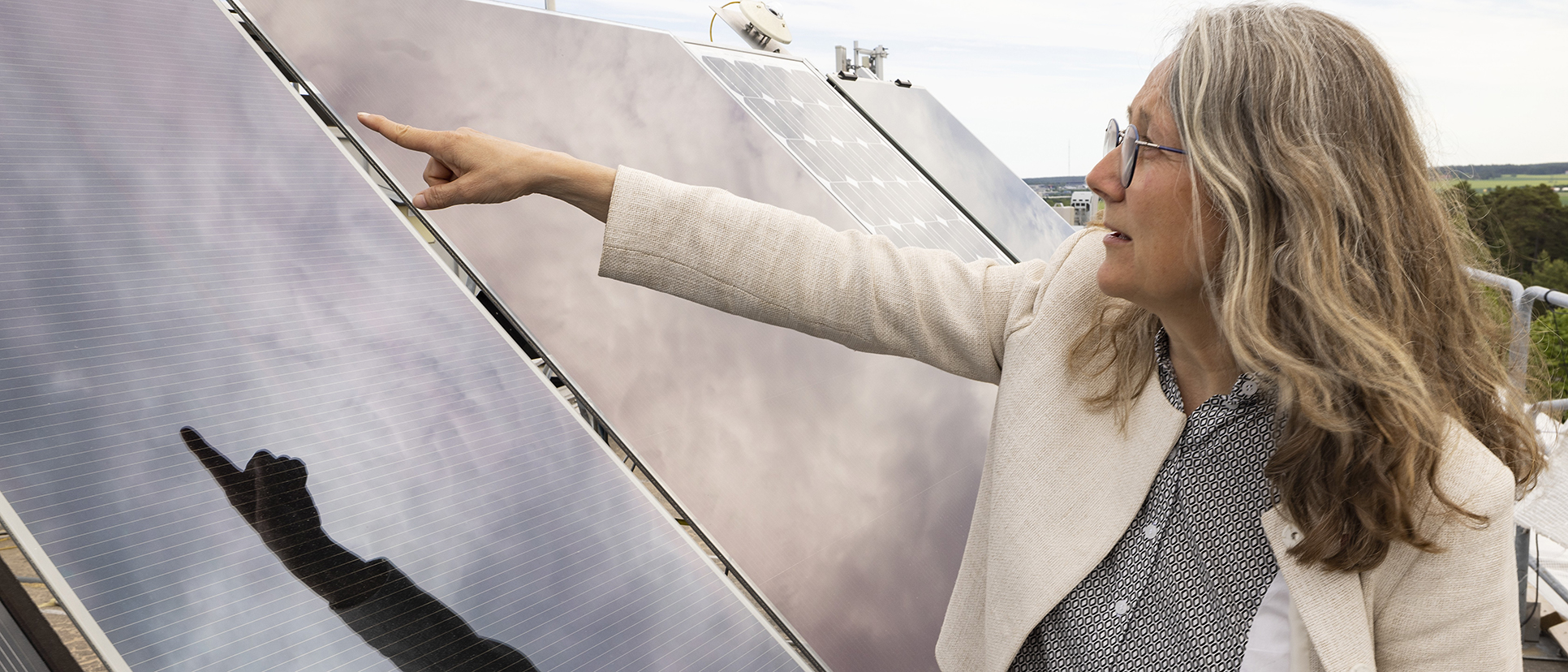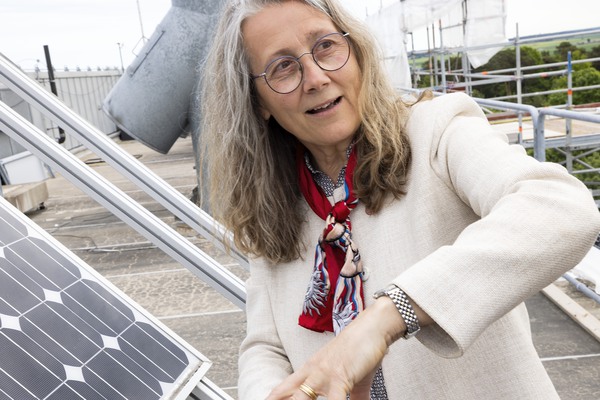Major EU collaboration on tandem solar cells

“The goal is to produce a high-efficiency prototype, to demonstrate that the technology works in real-life conditions," says Marika Edoff.
The development of tandem solar cells, which combine silicon and thin-film technologies, can provide more efficient and cheaper solar energy. “If we want even cheaper solar energy in the future, we need to make a technological leap," says Marika Edoff, a professor at Uppsala University who is leading a newly launched EU project on tandem solar cells.
The project will run for three years in collaboration among 14 different partners - universities, research institutes and private companies. Funding is provided by the EU's Horizon programme. This autumn, intensive work will begin on developing a working tandem solar cell that will also be tested outdoors.
“The goal is to produce a high-efficiency prototype, to demonstrate that the technology works in real-life conditions," says Marika Edoff.
Tandem solar cells are hot in research at the moment and are a development beyond silicon solar cells, which are most common on the market. It is a mature technology, which cannot be developed much further. However, inserting a layer of a different material which takes some of the sun's rays and converts them into energy can increase efficiency.
“The topmost cell specialises in blue light and does it better than the silicon solar cell, which specialises in red light. That provides better efficiency in the combined solar cell, provided that the cell you put on top is efficient and as stable for a long time as the silicon solar cell," says Marika Edoff.
New research breakthroughs
In this project, the thin-film material CIGS will be added, which has long been the subject of research at Uppsala University. CIGS solar cells have been produced on a large scale in the past, but have since been displaced by silicon solar cells.
“It is possible to make the CIGS solar cells blue-light specialised, but it has been difficult to do so efficiently enough," says Marika Edoff.
Now, there are new breakthroughs in research, mixing silver and sulphur. With the two new materials we can achieve even greater effectiveness. We think this is the chance for CIGS technology to contribute to the world. Precisely because it has been industrialised and tested for a long time, there is a high level of confidence in the technology, which is important in view of the stability requirement. These are products that should last at least 25 years.
Explosive development
Marika Edoff has been researching solar cells for 20 years and a lot has happened in that time. In the beginning, it was an expensive technology with a narrow range of applications. Today, solar cells are much more efficient and cheap to produce.
“We are seeing a large-scale development of solar cells all over the world, it is an explosive development. Now accounting for nearly six per cent of the world's electricity production, solar PV will soon be as big as wind power, which is also growing rapidly. Nuclear power accounts for 10% of global electricity production but is not growing as fast, so solar will overtake nuclear in the share of electricity generated in just a few years. This is a huge increase precisely because solar cells are so cost-effective."

Marika Edoff is looking forward to leading the project, which brings together the biggest experts on CIGS solar cells but also some who know a lot about silicon technology. Photo: Mikael Wallerstedt
Marika Edoff is looking forward to leading the project, which brings together the biggest experts on CIGS solar cells but also some who know a lot about silicon technology.
Today, much of the production takes place in China, but there are also investments in building factories in Europe. It is now possible to provide state support for solar PV production in the EU.
“It makes sense if we have a large market in Europe that we also manufacture. Then you have an overview of the ethical aspects and can achieve a more climate-smart production. For example, if the silicon base material is made in Norway using hydroelectric power, the carbon footprint of solar cells is reduced. Norway has a long history of significant silicon production," says Marika Edoff.
Pioneers in thin film technology
She is looking forward to leading the project, which brings together the biggest experts on CIGS solar cells but also some who know a lot about silicon technology. The enthusiasm among the participants is high, she says.
How is research at Uppsala University doing internationally?
“We are well placed and well known. What we do is watched by others, which shows that we are respected among scientists around the world. We didn't come up with this silver use, scientists in the US did. Then we took it a step further and now a lot of people are experimenting with silver. We were also pioneers in using very thin layers in the solar cells. You could say that we are leading the way in inventing new things."
Annica Hulth
